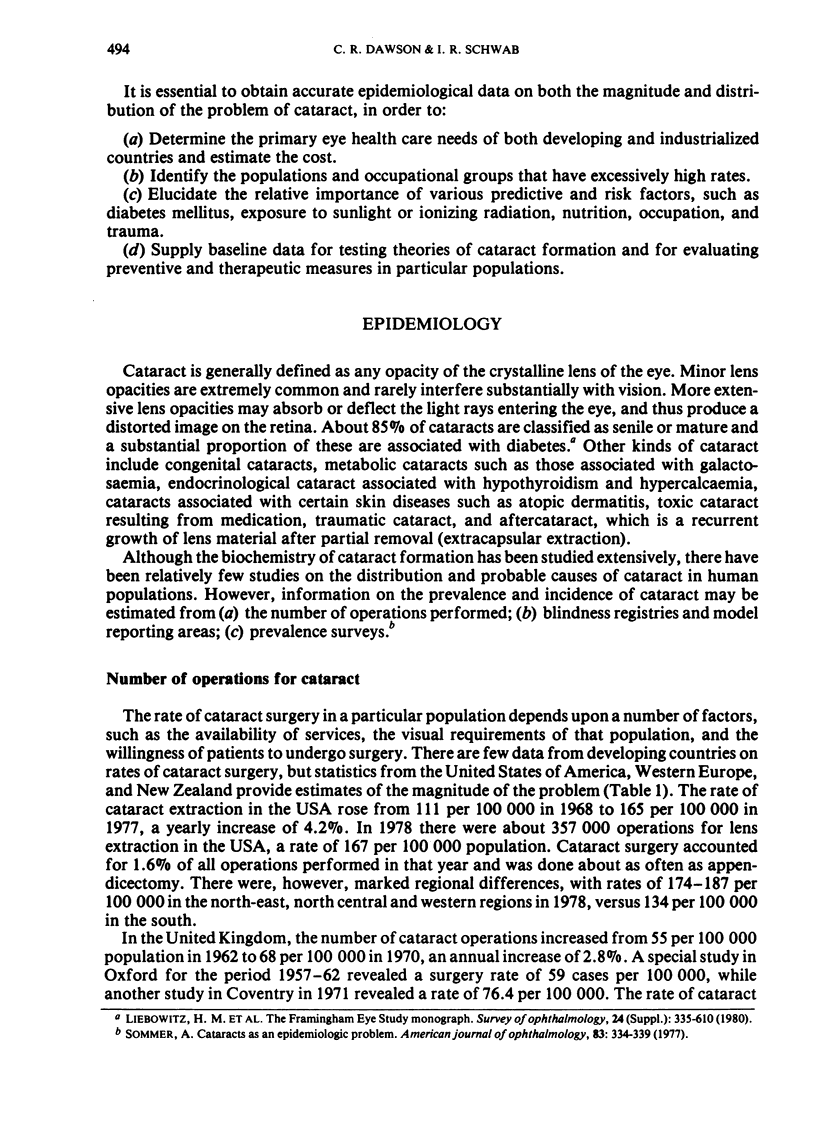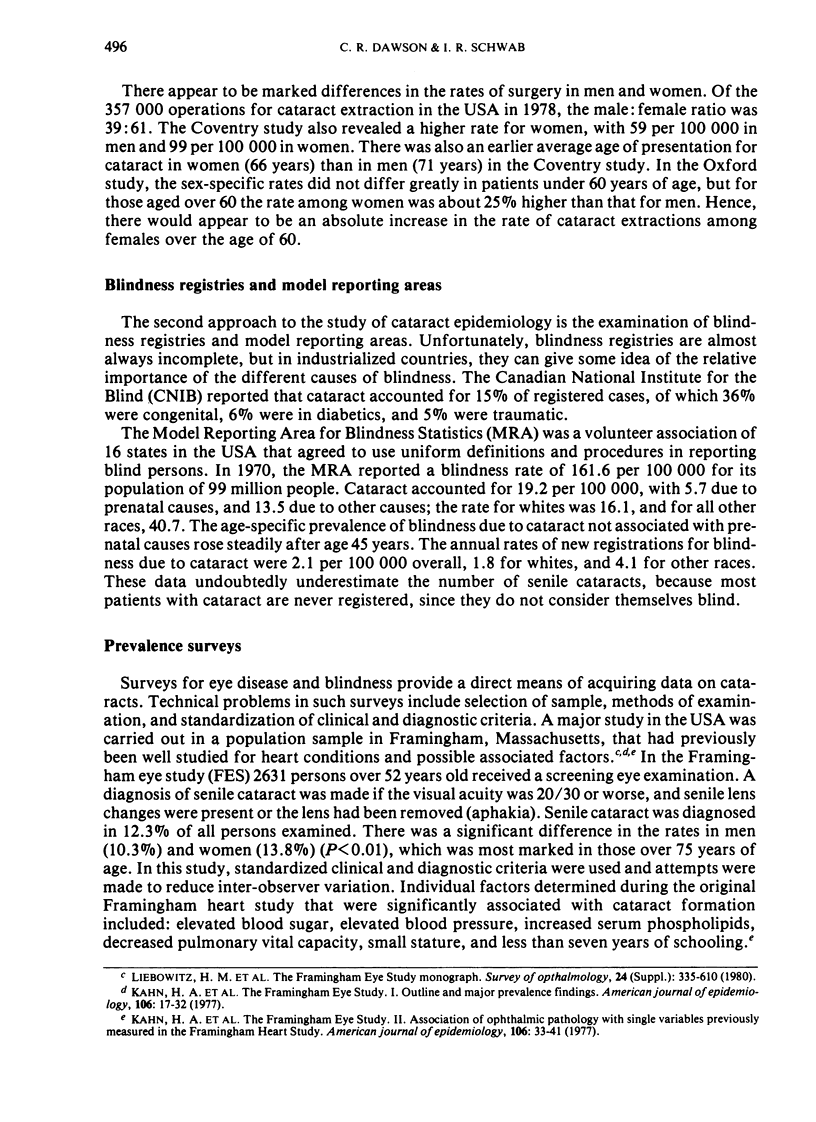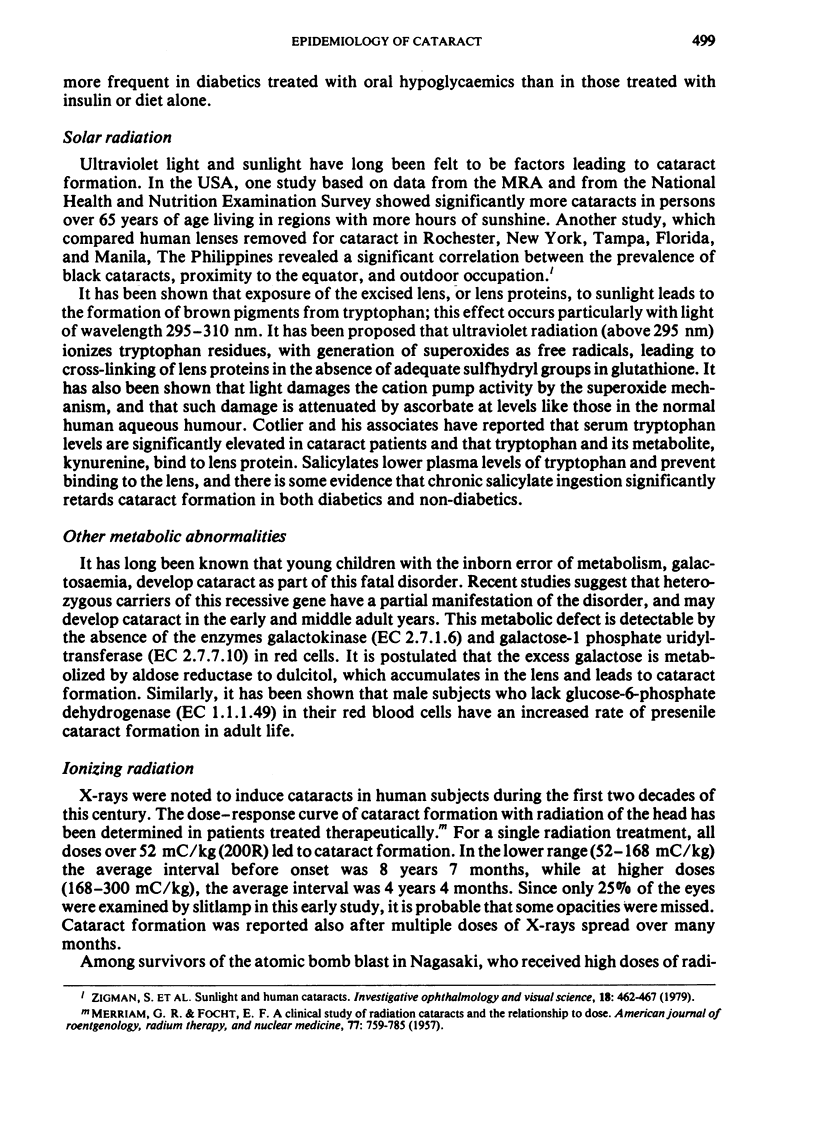Abstract
Cataract, or opacity of the lens of the eye, is the most common easily correctable cause of blindness in the world. However, little is known of its prevalence and incidence in different regions, particularly in developing countries, or of the relative importance of the various risk factors. This article describes the available knowledge on the epidemiology of cataract in both developing and industrialized countries, and reviews the methods used to obtain these data. The various predisposing factors, such as diabetes, exposure to radiation, and abnormalities of metabolism, along with the possible mechanisms of cataract formation, are also discussed.
Full text
PDF








Selected References
These references are in PubMed. This may not be the complete list of references from this article.
- Brennan M. E., Knox E. G. The incidence of cataract and its clinical presentation. Community Health (Bristol) 1975 Jul-Aug;7(1):13–20. [PubMed] [Google Scholar]
- Brennan M. E., Knox E. G. The incidence of cataract and its clinical presentation. Community Health (Bristol) 1975 Jul-Aug;7(1):13–20. [PubMed] [Google Scholar]
- CAIRD F. I., HUTCHINSON M., PIRIE A. CATARACT EXTRACTION IN AN ENGLISH POPULATION. Br J Prev Soc Med. 1965 Apr;19:80–84. doi: 10.1136/jech.19.2.80. [DOI] [PMC free article] [PubMed] [Google Scholar]
- CAIRD F. I., HUTCHINSON M., PIRIE A. CATARACT EXTRACTION IN AN ENGLISH POPULATION. Br J Prev Soc Med. 1965 Apr;19:80–84. doi: 10.1136/jech.19.2.80. [DOI] [PMC free article] [PubMed] [Google Scholar]
- Chatterjee A., Rambo V. C., Franken S. Vision survey in Himalayan area. Am J Ophthalmol. 1968 Jul;66(1):113–116. doi: 10.1016/0002-9394(68)91801-1. [DOI] [PubMed] [Google Scholar]
- Ederer F., Hiller R., Taylor H. R. Senile lens changes and diabetes in two population studies. Am J Ophthalmol. 1981 Mar;91(3):381–395. doi: 10.1016/0002-9394(81)90293-2. [DOI] [PubMed] [Google Scholar]
- Kahn H. A., Leibowitz H. M., Ganley J. P., Kini M. M., Colton T., Nickerson R. S., Dawber T. R. The Framingham Eye Study. I. Outline and major prevalence findings. Am J Epidemiol. 1977 Jul;106(1):17–32. doi: 10.1093/oxfordjournals.aje.a112428. [DOI] [PubMed] [Google Scholar]
- Kahn H. A., Leibowitz H. M., Ganley J. P., Kini M. M., Colton T., Nickerson R. S., Dawber T. R. The Framingham Eye Study. II. Association of ophthalmic pathology with single variables previously measured in the Framingham Heart Study. Am J Epidemiol. 1977 Jul;106(1):33–41. doi: 10.1093/oxfordjournals.aje.a112429. [DOI] [PubMed] [Google Scholar]
- MERRIAM G. R., Jr, FOCHT E. F. A clinical study of radiation cataracts and the relationship to dose. Am J Roentgenol Radium Ther Nucl Med. 1957 May;77(5):759–785. [PubMed] [Google Scholar]
- Nadler D. J., Schwartz B. Cataract surgery in the United States, 1968--1976. A descriptive epidemiologic study. Ophthalmology. 1980 Jan;87(1):10–18. doi: 10.1016/s0161-6420(80)35281-0. [DOI] [PubMed] [Google Scholar]
- Nadler D. J., Schwartz B. Cataract surgery in the United States, 1968--1976. A descriptive epidemiologic study. Ophthalmology. 1980 Jan;87(1):10–18. doi: 10.1016/s0161-6420(80)35281-0. [DOI] [PubMed] [Google Scholar]
- Suckling R. D. Survey of ophthalmic surgery in North Canterbury and Westland (1970-1975). N Z Med J. 1976 Sep 8;84(571):193–194. [PubMed] [Google Scholar]
- Swanson J. R., Rose V. E., Powell C. H. A review of international microwave exposure guides. Am Ind Hyg Assoc J. 1970 Sep-Oct;31(5):623–629. doi: 10.1080/0002889708506302. [DOI] [PubMed] [Google Scholar]


